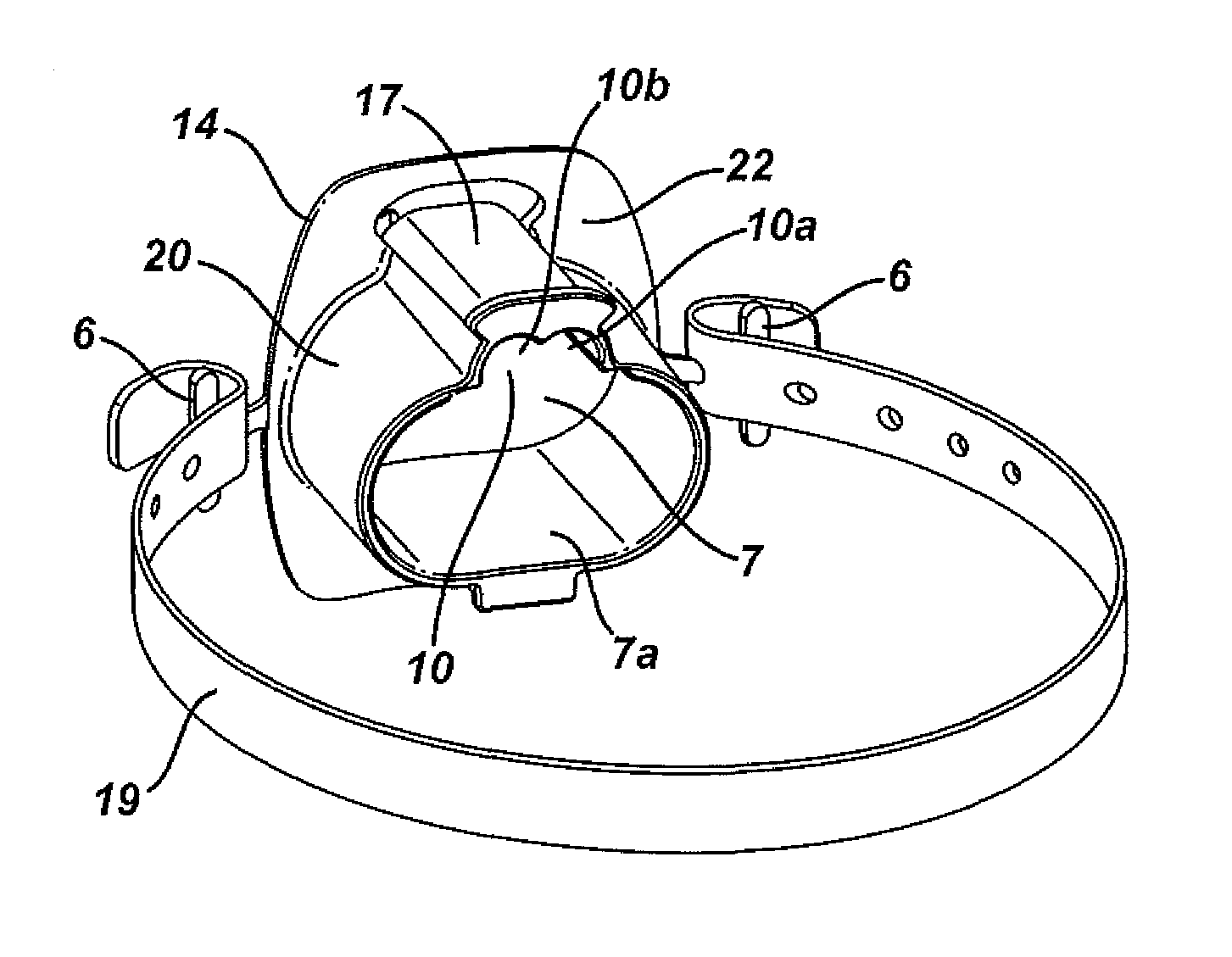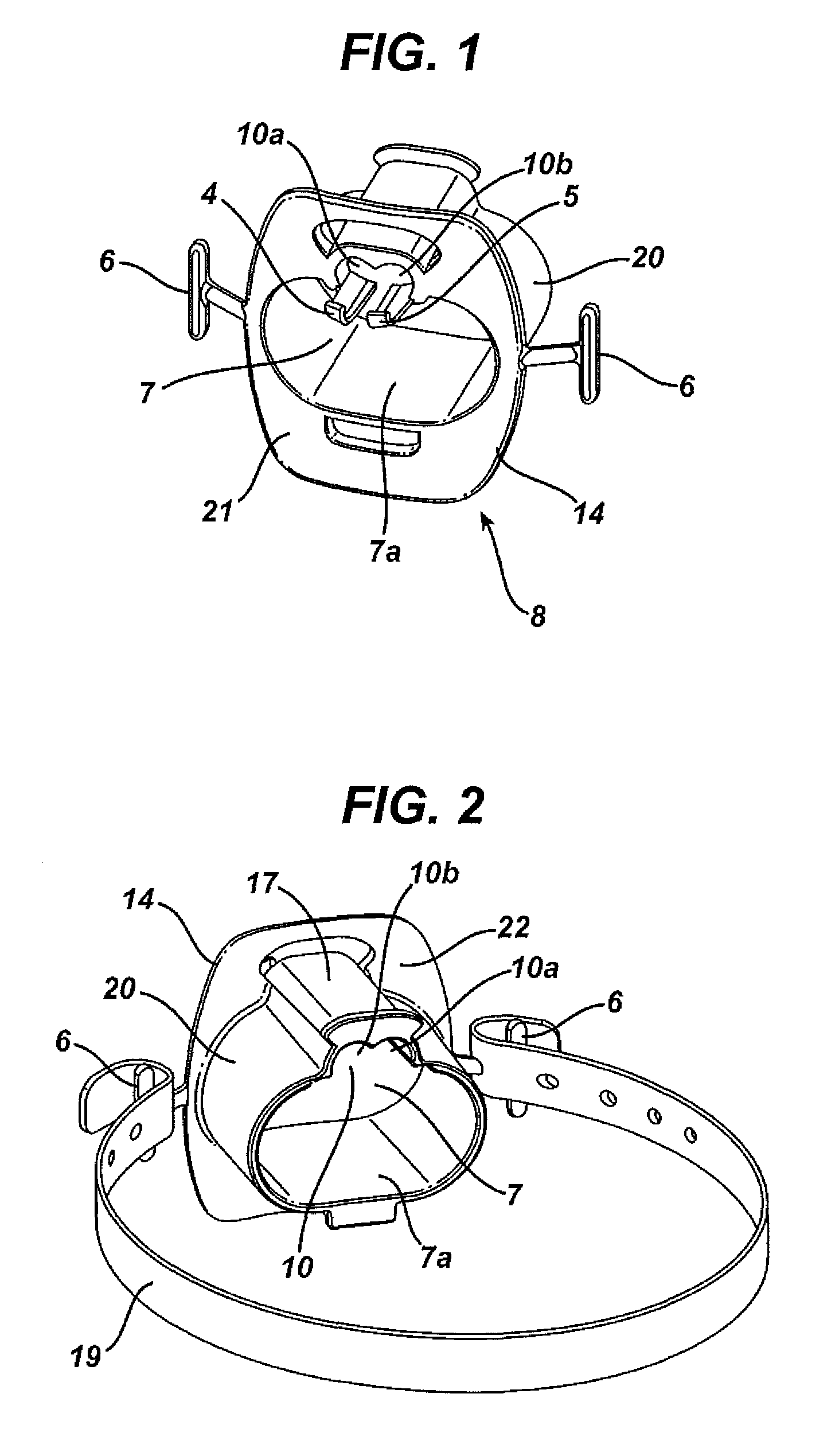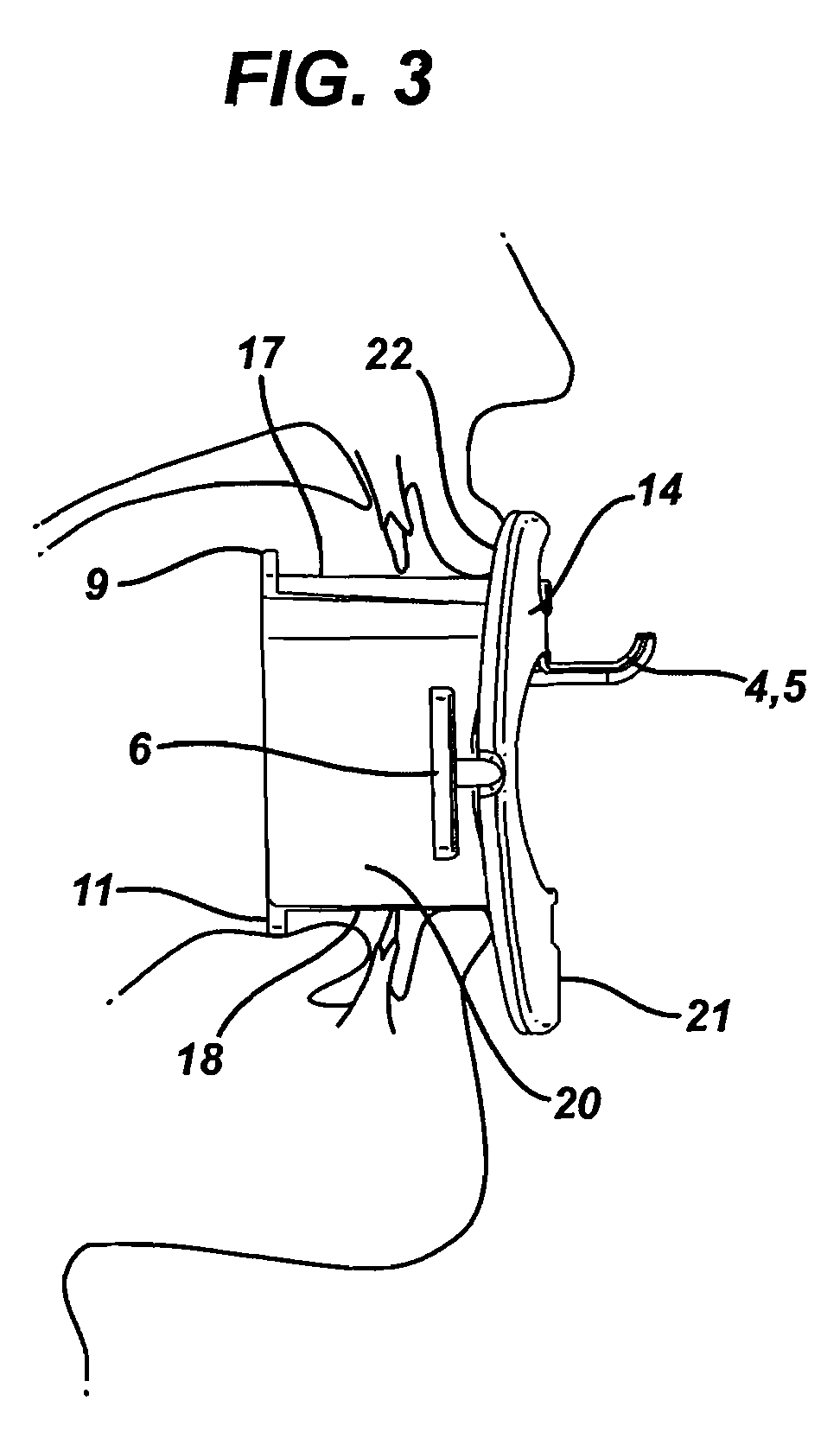Endoscopic bite block for use with cannula
a technology of endoscopic instruments and cannulas, which is applied in the field of endoscopic bite blocks, can solve the problems of patient biting on endoscopic instruments, certain well-known risks related to patient respiration, hypoventilation, and oxygen desaturation
- Summary
- Abstract
- Description
- Claims
- Application Information
AI Technical Summary
Benefits of technology
Problems solved by technology
Method used
Image
Examples
Embodiment Construction
[0016]Referring to FIG. 1 and FIG. 2, the bite block 8 of the present invention consists of a generally elliptical cylindrical main body 20, having a proximal end, which sits outside of a patient's mouth, and a distal end, which sits inside a patient's mouth. Main body 20 surrounds main oral passage lumen or channel 7, which is sized to allow for passage of an endoscope and ventilation of the patient. Oral passage 7 is defined by a lower surface 7a and an upper surface 7b (FIG. 5). Upper surface 7b further defines an opening for internal gas channel or lumen 10 (FIG. 5). Integral to the proximal end of main body 20 is flange 14, which sits outside of a patient's lips and serves both to locate bite block 8 relative to the patient's mouth and protect the patient's lips and teeth from an endoscope. Flange 14 is integral to main body 20 at distal surface 22. Attached at each side of flange 14 is strap attachment wing 6 for strap 19 that goes around the patient's head and helps secure bi...
PUM
 Login to View More
Login to View More Abstract
Description
Claims
Application Information
 Login to View More
Login to View More - R&D
- Intellectual Property
- Life Sciences
- Materials
- Tech Scout
- Unparalleled Data Quality
- Higher Quality Content
- 60% Fewer Hallucinations
Browse by: Latest US Patents, China's latest patents, Technical Efficacy Thesaurus, Application Domain, Technology Topic, Popular Technical Reports.
© 2025 PatSnap. All rights reserved.Legal|Privacy policy|Modern Slavery Act Transparency Statement|Sitemap|About US| Contact US: help@patsnap.com



